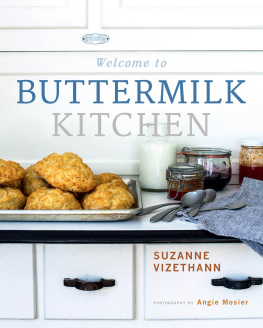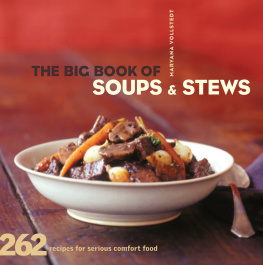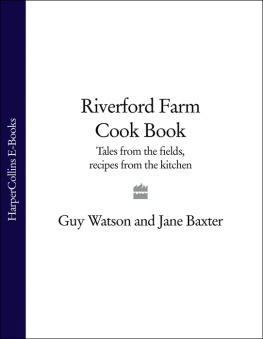The Farmers Wife Comfort Food Cookbook
Over 300 blue-ribbon recipes! Edited by Lela Nargi


Acknowledgments

I am grateful to
Farm Journal for granting me permission to use text, art, and photos from
The Farmers Wife for the purpose of this cookbook. To Kari Cornell and MBI Publishing, for thinking Id be right for this project. To Rob and Ada. To my mother, for her good-natured copyediting and common sense. To Denver Butson and Rhonda Keyser. Every time I chose a recipe I wondered, Did their grandmothers cook this?

Contents
INTRODUCTION
The Farmers Wife was a monthly magazine published in Minnesota between the years 1893 and 1939.
In an era long before the Internet and high-speed travel connected us all, the magazine aimed to offer community among hard-working rural women by providing a forum for their questions and concerns, and assistance in the day-to-day goings on about the farmeverything from raising chickens and slaughtering hogs, to managing scant funds and dressing the children, to keeping house and running the kitchen. The farmers wife, on first consideration, might not be an obvious source of recipes for comfort foods. After all, she isor was, during the forty-six years in which The Farmers Wife magazine was published in Minnesotahard-working, thrifty, and highly skilled in the kitchen. But when reading issues of The Farmers Wife from the years 1911 to 1939, the years from which the recipes in this book were culled, another image of the farmers wife comes to the fore: a woman willing and able to economize her time in the kitchen; a woman bent on nourishing her family, both body and soul; a woman with ready access to many of the ingredients we associate with comfort.  Naturally, no two people will agree on all the ingredients that comprise comfort; so much of comfort is rooted in our personal circumstance and rituals peculiar to our families. But few would argue with the basics: butter, cheese, bacon (farm staples, all) along with eggs, fruits, and vegetablesand chocolate.
Naturally, no two people will agree on all the ingredients that comprise comfort; so much of comfort is rooted in our personal circumstance and rituals peculiar to our families. But few would argue with the basics: butter, cheese, bacon (farm staples, all) along with eggs, fruits, and vegetablesand chocolate.
And few would argue with the premise that comfort food is simple foodrelatively easy to prepare and not requiring sophisticated palates to enjoy. For most, the equation of warmth with comfort rings true no matter the weatherwarmth from stews, casseroles, and things roasted in the oven (although some cool things have been included in the pages of this book as well, because sometimes ice cream is a comfort, and so is lemonade). For most of us, comfort is closely associated with memorymemories of things our mothers and grandmothers cooked for us when we were sick; memories of rainy Saturdays spent sitting in the kitchen while something delicious was baking in the oven; memories of family gatherings and of traditions passed down through the generations. And since notions of what constitutes a comfort food is highly subjective, this book aims to provide something for everyone, no matter your heritage, no matter your preferences. Perhaps youll even discover a brand-new something to offer you comfort. The recipes have been reprinted here as closely as possible to how they appeared on the pages of the magazine.
Many were written by the magazines own readers. In their language, they reflect the curious style and manners of their times, and herein lies a great deal of their charm, and the reason I have tried to alter them as little as possible. Anyone accustomed to reading cookbooks will feel right at home among the pages of this book. After all, the farmers wife was nothing if not common-sensical, and so were her recipes. Anyone new to cookbooks, and more particularly, historical cookbooks, is advised to follow the golden rule of the recipe: read it thoroughly, start to finish and preferably more than once, before embarking. Make sure you understand the instructions and the order in which they are to be carried out; make sure you have all the ingredients at hand and assembled; and make sure to preheat your oven for a good 20 to 30 minutes before you are ready to bake.
Wherever possible, I have attempted to abolish confusing, misleading, or laborious instructions. Ive also substituted modern equivalents for such obsolete measurements such as the gill (4 ounces) and the teacup (8 ounces). More than anything, this book wants to be used, not merely perused and admired. So, please use it! And know that as you do, you are cooking up a bit of farmland history. Lela Nargi Approved by Farm Women!
Approved by Farm Women! July 1936
July 1936 If someone should offer you a guide to help you do a better job of buying, would you be interested? Naturally you would. Probably few things would interest you more.
If someone should offer you a guide to help you do a better job of buying, would you be interested? Naturally you would. Probably few things would interest you more.
Well, on this page The Farmers Wife magazine presents for the first time a seal which will be just such a guide. It will become familiar to you in the months and years to come, and you will discover that it is a friendly emblem in which you can put trust. Whenever you see it, you will know that the product on which it appears has been given an unbiased test by 100 to 500 farm women like you, in homes like yours, and has been approved by them for farm home use... One homemaker to whom we explained this new idea said: That would mean a lot to meto know that women themselves have tried a product in their own home and liked it. To make these tests we have selected a group of readers of The Farmers Wife magazine to be reader-testers. There will be 500 to begin with and perhaps more later.
To make sure that some of them will be like you, with equipment like yours, we have chosen them so that they will give a complete cross-section of American farm homes. Take the first three women who enrolled in the reader-test group, for example. The first lives on a big dairy farm, has three children, but cooks for a family of ten including hired help, and has a wood-burning range supplemented by a liquid-fuel stove. The second (whose picture appears on this page) has three children, 5 to 12 years old, and cooks on an electric range. The third has children ranging from one in grade school to a married daughter living across the road. The daughter is just learning how to cook and both she and her mother, who is a splendid cook, will make the test.
They use a bottled gas range. Still others use kerosene and gasoline stoves. Their families vary all the way from no children to ten. And the farms range all the way from truck acreages to ranches... But while there will be all of these variations, the women will have this in common: they will all be outstanding women in whom their neighbors have confidence. They will be alert women, interested in keeping in touch with new developments in foods and equipment.







 I am grateful to Farm Journal for granting me permission to use text, art, and photos from The Farmers Wife for the purpose of this cookbook. To Kari Cornell and MBI Publishing, for thinking Id be right for this project. To Rob and Ada. To my mother, for her good-natured copyediting and common sense. To Denver Butson and Rhonda Keyser. Every time I chose a recipe I wondered, Did their grandmothers cook this?
I am grateful to Farm Journal for granting me permission to use text, art, and photos from The Farmers Wife for the purpose of this cookbook. To Kari Cornell and MBI Publishing, for thinking Id be right for this project. To Rob and Ada. To my mother, for her good-natured copyediting and common sense. To Denver Butson and Rhonda Keyser. Every time I chose a recipe I wondered, Did their grandmothers cook this? 
 Naturally, no two people will agree on all the ingredients that comprise comfort; so much of comfort is rooted in our personal circumstance and rituals peculiar to our families. But few would argue with the basics: butter, cheese, bacon (farm staples, all) along with eggs, fruits, and vegetablesand chocolate.
Naturally, no two people will agree on all the ingredients that comprise comfort; so much of comfort is rooted in our personal circumstance and rituals peculiar to our families. But few would argue with the basics: butter, cheese, bacon (farm staples, all) along with eggs, fruits, and vegetablesand chocolate. Approved by Farm Women!
Approved by Farm Women! If someone should offer you a guide to help you do a better job of buying, would you be interested? Naturally you would. Probably few things would interest you more.
If someone should offer you a guide to help you do a better job of buying, would you be interested? Naturally you would. Probably few things would interest you more.